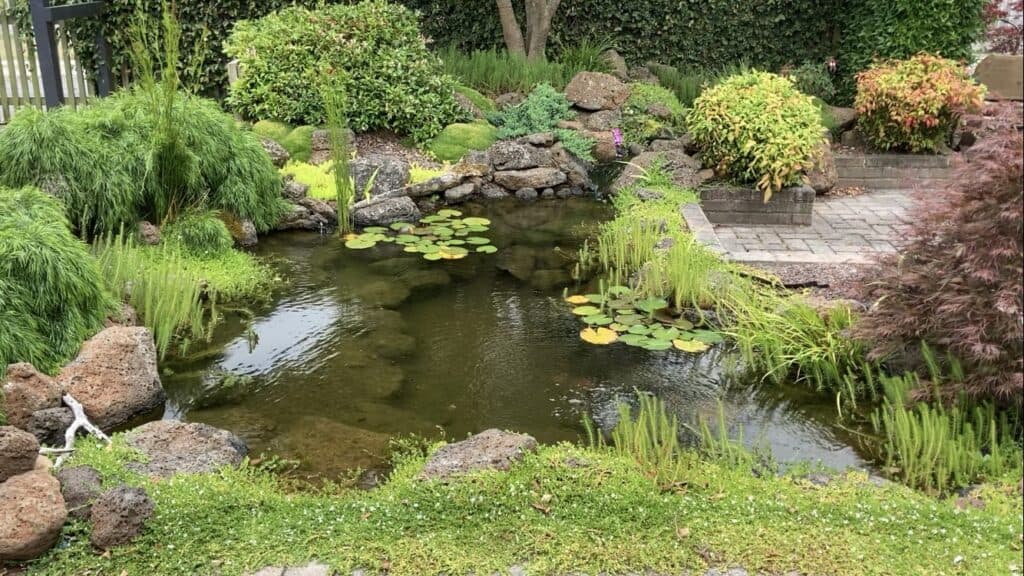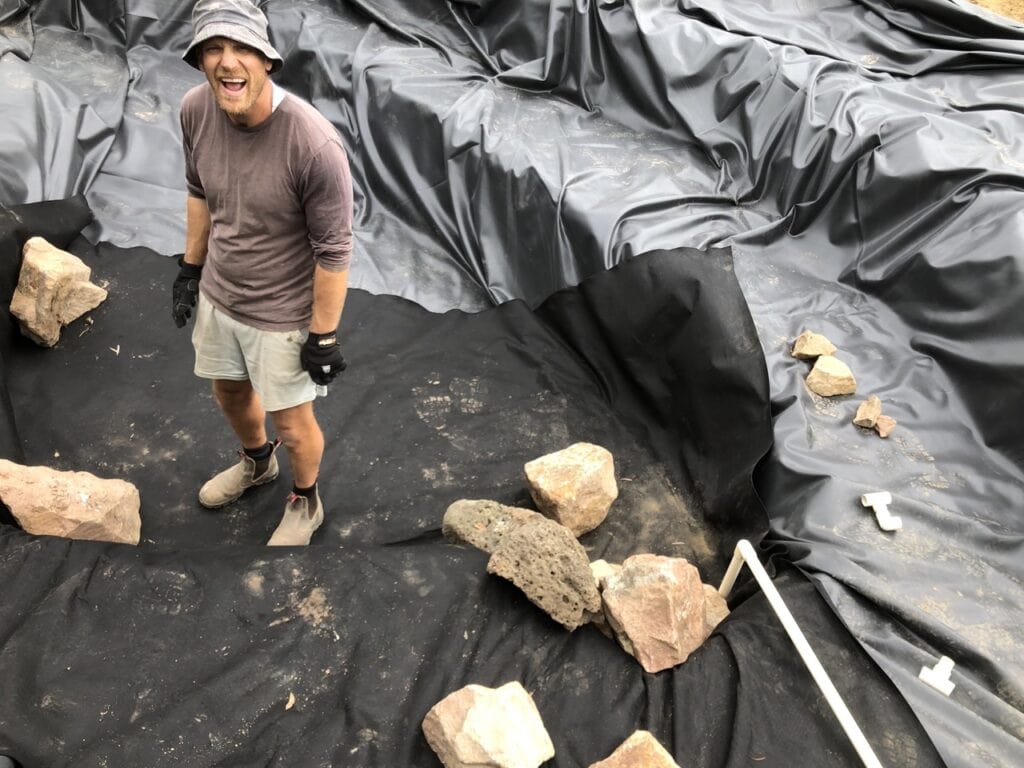If you’re anything like me, you love the look of rock and pebble in natural creek beds, streams, and ponds. The way water flows and swirls around stones — it’s just magical.
So when I started designing and building my own ponds, of course I wanted to include rock and pebble. But I quickly realised that this topic stirs up debate. Some love it. Some hate it. And everyone seems to have a strong opinion.
After building multiple ponds and experimenting with different styles, I’ve learned a lot. In this post, I’ll share:
- Why I chose to include rock and pebble,
- Some of the common challenges they bring,
- How I manage them (without relying on expensive products),
- And how you can decide if it’s right for your pond.
If you prefer video content. you can watch this video:
Why I Fell in Love with the Aquascape Ecosystem Style
When I first started learning about ponds, I came across the Aquascape ecosystem approach. The ponds were stunning: full of life, rock, pebble, aquatic plants — and most importantly, crystal clear water.
Aquascape promotes working with nature, not against it. Their ponds are marketed as low maintenance, and to be fair — they can be, especially when first installed.
After seeing their ponds showcased online, I knew I wanted one. Eventually, I installed a few using their components. And they looked just as good as the videos — at first.
The Reality of Rock and Pebble Over Time
But ponds are living systems. Leaves fall in. Fish produce waste. Plants grow — and die back. And soon, fuzzy stuff was growing on the rocks, debris settled into the pebble, and I couldn’t even see it anymore.
That’s when I realised something important: the ponds you see online are usually freshly cleaned.
And it makes sense — if you’re showcasing ponds that cost tens (or hundreds) of thousands of dollars, you want them to look pristine.

Join my free email list
If you would like to join my free email list click the button below.
I promise I won’t spam you, I’ll only send information I think can help you save money building and maintaining a pond.
The Yearly Clean-Out Method
Aquascape recommends a yearly clean-out: drain the pond, flush it, rinse everything, and start fresh.
It works — the pond looks brand new afterward. But I started asking myself: what’s the cost of doing this every year?
Not just the time and effort, but the ecological cost:
- What happens to the tiny beneficial organisms living in the pond?
- Are we destroying the very ecosystem we’re trying to support?
Relying on Products Didn’t Sit Right With Me
By cleaning the pond so thoroughly, I was disrupting the balance. Suddenly, I was relying more on bottled bacteria, water clarifiers, and algae treatments to restore what I’d just wiped out.
But before cleaning, my pond water was actually clear. The fish were healthy. And there was plenty of live food from the tiny critters breaking down organic waste.
I couldn’t help but feel like I was undoing what nature had already figured out.
A Low-Maintenance Alternative (That Actually Works)
For a while, I took a middle ground:
- I would use a pond vacuum to remove excess sediment,
- Emptied the skimmer basket regularly,
- And cleaned the bio-filter sponges.
It helped keep things tidy without a full drain and scrub.
But as I added more ponds to my property (yes, I went a bit pond crazy), I needed a more sustainable approach — one that didn’t involve hours of maintenance or expensive gear.
Here’s Where I’ve Landed (After Years of Experimenting)
I now accept a bit of dirt and fuzz on my rock and pebble. I’ve stopped trying to make them look spotless.
Why?
Because I’ve learned that:
- A bit of muck is normal — and healthy,
- Rock and pebble provide refuge for beneficial microbes and insects,
- My ponds are crystal clear without harsh treatments,
- And most importantly, the fish are thriving.
In fact, some of my ponds haven’t been cleaned in years — and they still look good.
So… Should You Add Rock and Pebble?
You don’t need to.
But if you love the natural look, and you’re willing to put in a little effort — or accept some natural buildup — it can absolutely work.
Your options:
- Keep it clean: Regular light maintenance can keep the rock and pebble visible and fresh-looking.
- Go natural: Let things build up a bit and focus on healthy filtration instead of perfection.
- Skip it altogether: Some of the easiest ponds to maintain have no pebble at all.
At the end of the day, as long as:
- The water is filtered well,
- The fish are healthy,
- And you enjoy the pond…
Then you’re doing it right.

Blueprint I use to build my ponds
- All the numbers I use to design my ponds, delivered straight to your inbox
- These formulas have helped people all over the world build beautiful, low maintenance ponds, without spending a fortune.
- Access to a private community of like minded people and a chat bot that loves answering pond related questions.

